
The Gothic style brought both divine light and soaring height to medieval churches.
- Subject:
- Art History
- Arts and Humanities
- Material Type:
- Lesson
- Provider:
- Smarthistory
- Date Added:
- 09/08/2021

The Gothic style brought both divine light and soaring height to medieval churches.
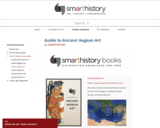
This book contains all of Smarthistory’s content for the Ancient Aegean, including Cycladic, Minoan, and Mycenaean art.

This book contains all of Smarthistory’s content for Ancient Egyptian art.

This book contains all of Smarthistory’s content for Ancient Egyptian art.
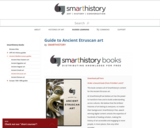
This book contains all of Smarthistory’s content for the Ancient Etruscan art.
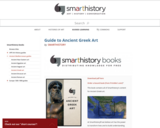
This book contains all of Smarthistory’s content for Ancient Greek art.

This book contains all of Smarthistory’s content for Sumerian, Akkadian, Neo-Sumerian / Ur III, Babylonian, Assyrian and Persian art.
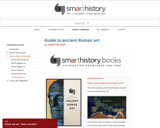
This book contains all of Smarthistory’s content for the Ancient Roman art.

The “Beginner’s guide” introduces foundational concepts, such as the chronology of Byzantine history, sacred imagery, and wearable objects. Subsequent sections are arranged chronologically, covering the Early Byzantine period (c. 330–700), the Iconoclastic Controversy (c. 700s–843), the Middle Byzantine period (843–1204), the Latin Empire (c. 1204–1261), and the Late Byzantine period (c. 1261–1453) and beyond.
These sections include thematic essays on Byzantine art and architecture, essays that focus on key works (subtitled artworks in focus or architecture in focus), and essays that explore Byzantium’s relationships with other cultures (subtitled cross-cultural perspectives). Finally, we have included questions for study or discussion to encourage teachers, students, and other readers to engage with videos and other content on the Smarthistory website which could not be included in this book format but which we believe richly compliments what is presented here.

The “Beginner’s guide” introduces foundational concepts, such as the chronology of Byzantine history, sacred imagery, and wearable objects. Subsequent sections are arranged chronologically, covering the Early Byzantine period (c. 330–700), the Iconoclastic Controversy (c. 700s–843), the Middle Byzantine period (843–1204), the Latin Empire (c. 1204–1261), and the Late Byzantine period (c. 1261–1453) and beyond.
These sections include thematic essays on Byzantine art and architecture, essays that focus on key works (subtitled artworks in focus or architecture in focus), and essays that explore Byzantium’s relationships with other cultures (subtitled cross-cultural perspectives). Finally, we have included questions for study or discussion to encourage teachers, students, and other readers to engage with videos and other content on the Smarthistory website which could not be included in this book format but which we believe richly compliments what is presented here.
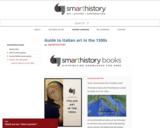
This book contains all of Smarthistory’s content for Italian art in the 1300s.

This book contains all of Smarthistory’s content for Italian art in the 1400s.

Looking at art is not an easy, straightforward process, even though it often feels natural.
The power of art can be immediate, striking, even arresting. We are now living in what is the most media-saturated era of world history, as we are bombarded with visual images constantly, but we have very little training in how to critically interpret these images. The fundamental tools are not taught to children in school. Looking—deep, careful looking—is not as simple as it seems. It is the aim of this book to teach the skills needed to decode art, to provide you with tools you can apply to all of the visual data around you.
In this course, you will explore a wonderfully diverse array of works. They will likely strike you as beautiful or ugly, stunning or strange, funny or compelling, or any combination of these reactions at once. Art does not have to be beautiful or uplifting. Likewise, though, it does not have to be dark and serious. There are no limits on the moods and ideas art can or should convey. There are, though, tools and tricks through which artists convey these moods and ideas. These visual techniques, above all, will be the subject of this book.

Here you can find all the introductory content you'll need to begin your exploration of the art of Africa.

The Great Pyramids at Giza, the Parthenon in Athens, the Colosseum in Rome, and more.

From the Dome of the Rock to the Taj Mahal, the Coronation Mantle, the Ardabil Carpet, and more... The art of the Islamic world includes everything from magnificent mosques to delicate miniatures, gigantic carpets to ceramic bowls.

Discover thousands of years of art from the world's largest continent. From monumental palaces to rock-cut cave temples, golden crowns to painted scrolls.

From the Renaissance to the French Revolution. A lot happens! We begin with the Late Gothic, proceed through the Renaissance and the Baroque, and end with the French Revolution.

Science, industry and the growth of cities transformed art forever. Van Gogh, Delacroix, Monet, Cassatt —we recognize our modern world in 19th century art.

It can be difficult gain perspective on your own time, but these artists manage to do just that. A room full of seeds, a picture of a picture, a billboard on Times Square, and a dead shark: what does it all mean?